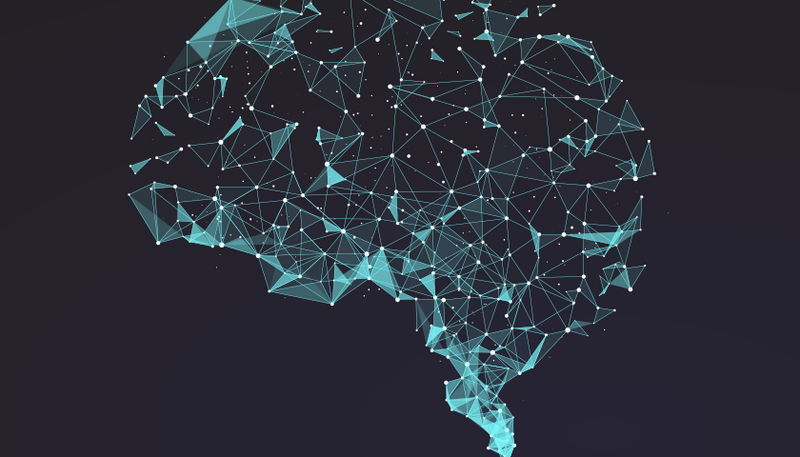ATD Blog
Does Artificial Intelligence Replace Thinking?
Thu Apr 11 2019

Artificial intelligence (AI) delivers many truly amazing capabilities. Vendors are even showing the potential of AI-driven software to personalize customer experience in an organizationally aligned way, making automated adjustments to pricing, messaging, operations, and finance, all optimized for one sale.
If this sounds like science fiction, it is. I am combining a few technologies here, including customer relationship management and integrated enterprise resource planning platforms. These systems feed the current trend toward extreme personalization, also known as personalization to a level of one. But this is within the realm of near-term possibility.
Technology as advanced as this can sound like a panacea to companies that have struggled with cultural adaptiveness. It can sound like these systems can achieve, or will soon be able to achieve, similar outcomes, no matter your human resources.
We need to say such things out loud in order to really consider them. Hence the question driving this post: Will end-to-end, AI-driven software replace the need for human integration and collaboration? Or more practically, will AI bypass the need for human thought? Can we keep our silo mentalities and let AI do the talking for us?
Let’s first simplify this question by remembering some key facts about competition and technology. First, let’s look at chess, one of the oldest competitions in which AI has surpassed human ability. Deep Blue beat Garry Kasparov in 1997, more than 20 years ago. But less than 10 years later, the spotlight was taken back by centaurs: teams combining human and computer players.
The combination of human and machine was so powerful that neither human nor computer needed to be top-of-the-line. Steven Cramton and Zackary Stephen won against grandmasters and supercomputers alike in 2005. In centaur teams, neither human nor machine needed to be good at all; they needed only experience in working together.
If you look at the AI market today, this same hierarchy remains true. My team has looked across real AI software. The capabilities are truly remarkable . . . only in areas where humans work with AI. Root cause analysis, for instance, has become extremely challenging for humans because systems complexity has surpassed the brain’s maximum processing capability. In these environments, software can help engineers pinpoint the most probable areas where the problem lies.
In our own industry, customer experience journey-mapping software is facilitating the mapping process from micro level to macro level. AI uses data to create the starting point, but it also requires human collaboration to achieve groundbreaking results.
As we automate personalized systems and empower systems with more data, systems will be able to provide incredible insights. But humans will continue to bear the responsibility of deciding, implementing, and executing on those insights. Machine-to-machine (M2M) communication only reduces the busywork. This makes decisions, human decisions, even more impactful, not less.
At least in the short term, say five to 10 years, AI will act like any other technology, accelerating the rate of strategy execution. In this environment, we will need cultural adaptiveness, advanced talent development programs powered by effective training. We will need to make decisions oriented around real customers, decisions that AI might never have the empathy to make.
Rob Markey, co-author of the Harvard Business Review article on Net Promoter Score that marked a seismic shift in our industry, believes that in the future, “Organizations are going to come together with an operating model built around customer goals. They're going to create end-to-end accountability for all of the things \[required\] to meet \[those goals\] . . . They're going to incorporate a much more readily available and finance-backed Customer Lifetime Value (CLV), and I also believe and hope that investors and analysts will come to place real value on this value of customers.” (For more, check out Customer Bliss, “How Has CX Evolved and How Should It Impact Your Company’s Growth and Leadership?”)
I draw attention to his assessment because of its emphasis on human resources, as opposed to systems. He says, “an operating model built around customer goals.” He emphasizes “investors and analysts” in their understanding of customer lifetime value, rather than the ability of IT to act on that value.
Why? Because the real problem with customer experience transformations springs from how corporate leadership approaches it.
When leaders truly understand and support CX, transformations are much more likely to succeed. We know this as an industry: “The most important criteria for getting a transformation effort off to a fast start is to find the parts of the organization where the leader and at least some employees want to change” (McKinsey, “Designing and Starting Up a Customer-Experience Transformation”). But most companies experience a gap between seeing and doing. Empathy is so far from the norm, it fails to take hold. Ironically, this failure occurs exactly where it matters most.
In other words, the answer to this article’s main question is: No! AI does not excuse us from the need to think, especially about change. The opposite is closer to the truth because the feedback we receive from machines, albeit more insightful and easier to understand, will become more frequent and more compelling. The organization will therefore have even more change to enact, not less.
The businesses whose cultures can enact changes more quickly will be the ones to command loyalty, growth, and profits. It is the onus of leaders, investors, and analysts to recognize the returns of customer centricity over digital transformation. We have the data right in front of us, but only continuing precedent will change the nature of boardroom discussion. In the meantime, customer experience leaders will continue to dominate industries, as they have in competitive markets for the last 30 years.
